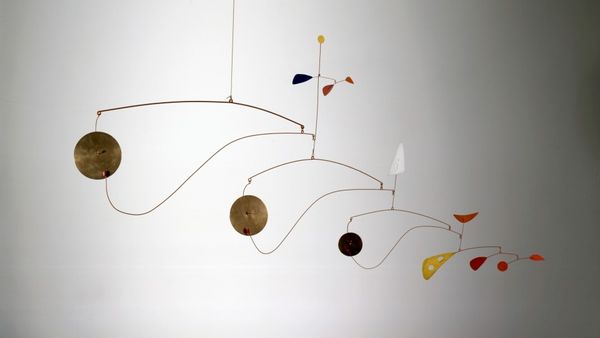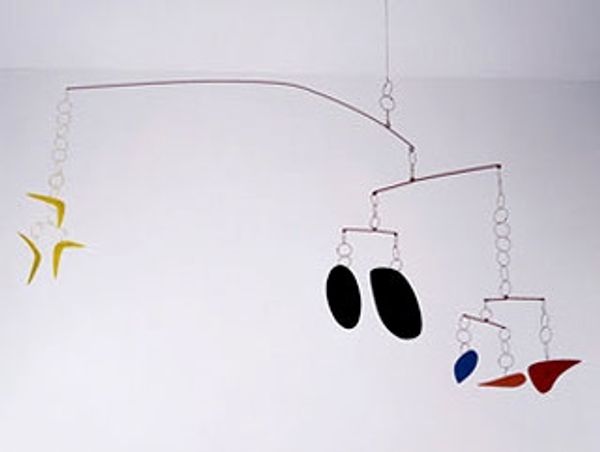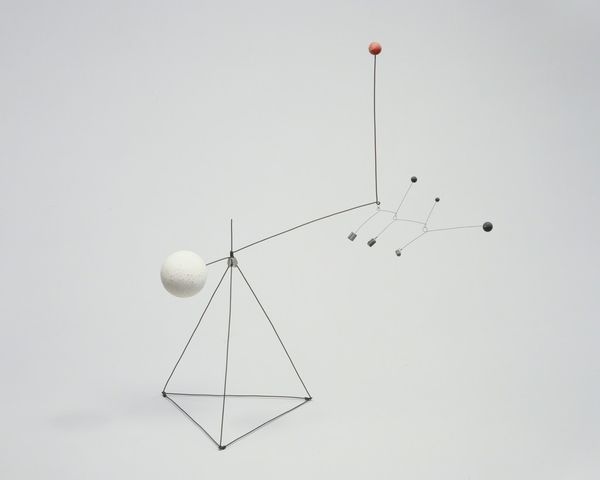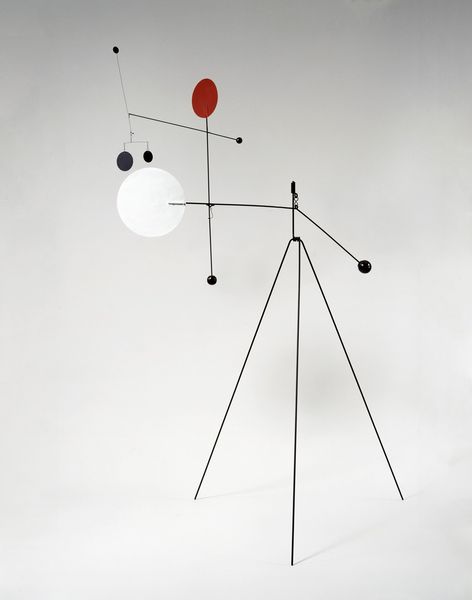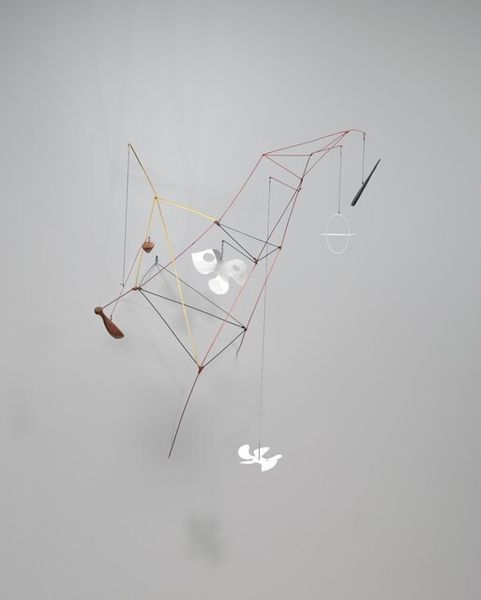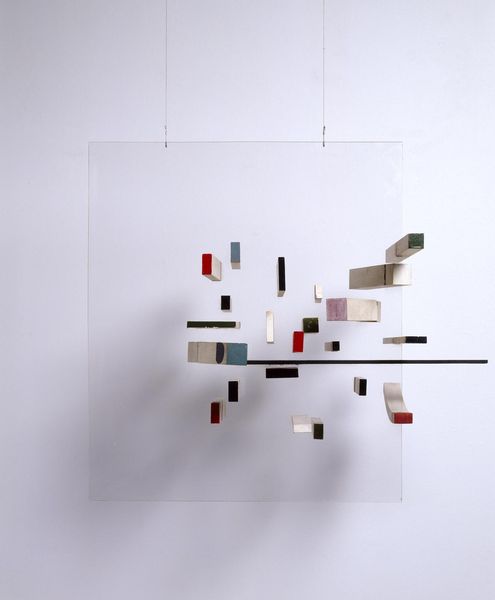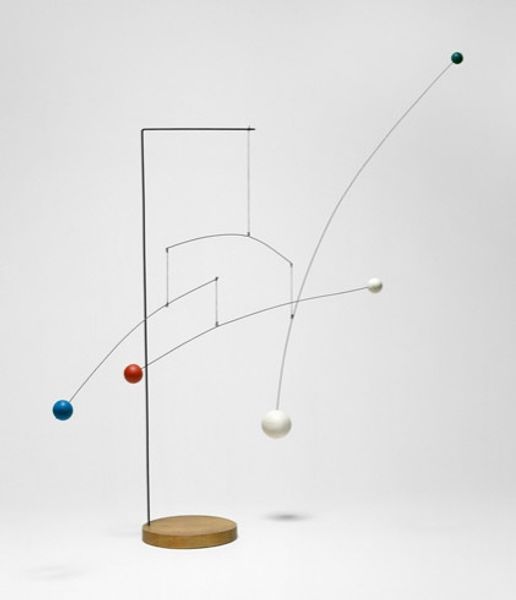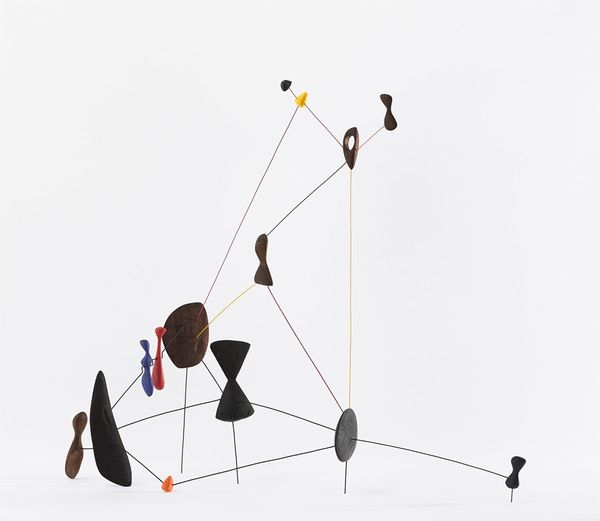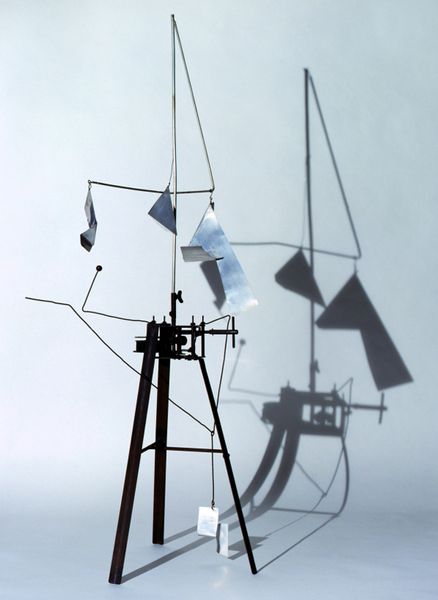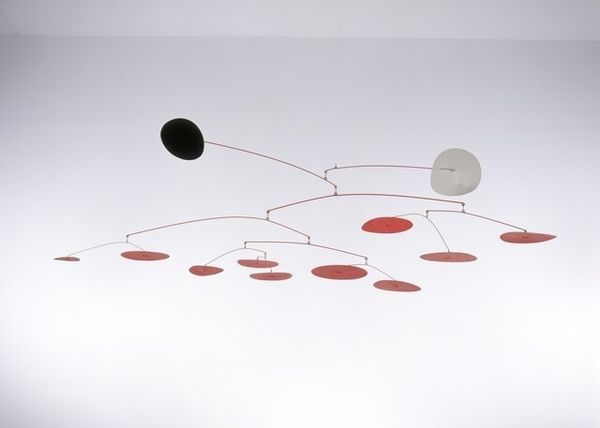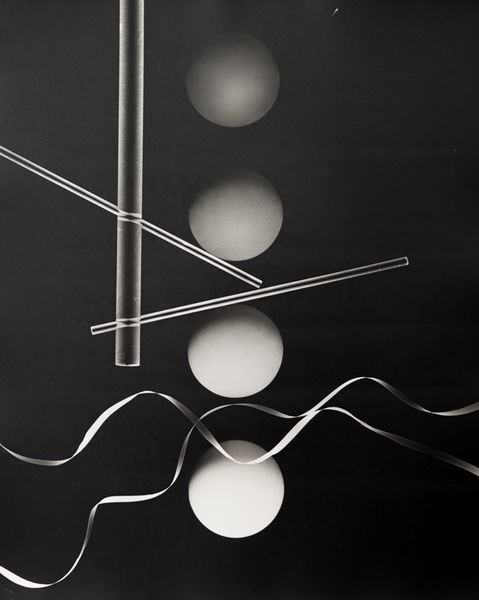
metal, sculpture, mobile
#
abstract-expressionism
#
kinetic-art
#
metal
#
sculpture
#
mobile
#
abstraction
#
line
Copyright: Alexander Calder,Fair Use
Curator: Let’s spend some time with Alexander Calder’s kinetic sculpture, "TINES," created in 1943. Calder masterfully uses metal to bring to life a constellation of shapes suspended in space. Editor: It strikes me immediately as incredibly light and airy, almost a drawing in space. The way the elements are balanced—it has a beautiful formal tension. Curator: Calder's work emerges from a period profoundly shaped by the anxieties of World War II, and his mobiles offered a deliberate counterpoint, an assertion of lightness against the backdrop of global conflict. Editor: You can really see that through the careful construction. Look at how he uses the metal—it's minimal, yet so deliberate. Each line contributes to the overall visual experience. It reminds me of Miró's paintings, that sort of whimsical play with forms, but realized in three dimensions. Curator: Indeed. Calder also engaged deeply with the political climate through his art. The precarious balance in this work subtly evokes the fragility of peace during this era, almost like an argument for non-violence as the delicate suspension of the elements suggests inherent tensions, yet nothing collapses. Editor: That’s a really interesting point. But what I love is how it functions purely as form and movement. Even without the historical context, one could spend hours contemplating the interplay of shapes and how the piece transforms with every gentle shift in the air. The materiality too, right, with how metal—a traditionally static material—achieves weightlessness and ethereal qualities here. Curator: Yes, I believe it shows Calder’s ingenious way of synthesizing personal artistic exploration with wider societal concerns, making this far more than a study in pure aesthetics. It's about our world and the hope for dynamic equilibrium. Editor: And seeing the art engaging the viewer on all fronts—the movement and materiality giving so much for the eyes to take in. It truly underscores the complexities that exist, even in something as seemingly simple as a balanced mobile. Curator: It’s these multiple levels of meaning and experiences that keep drawing us back to his work. Editor: Absolutely. Calder teaches us to look closer at not just art but to life as a series of interconnected motions and weights.
Comments
No comments
Be the first to comment and join the conversation on the ultimate creative platform.
